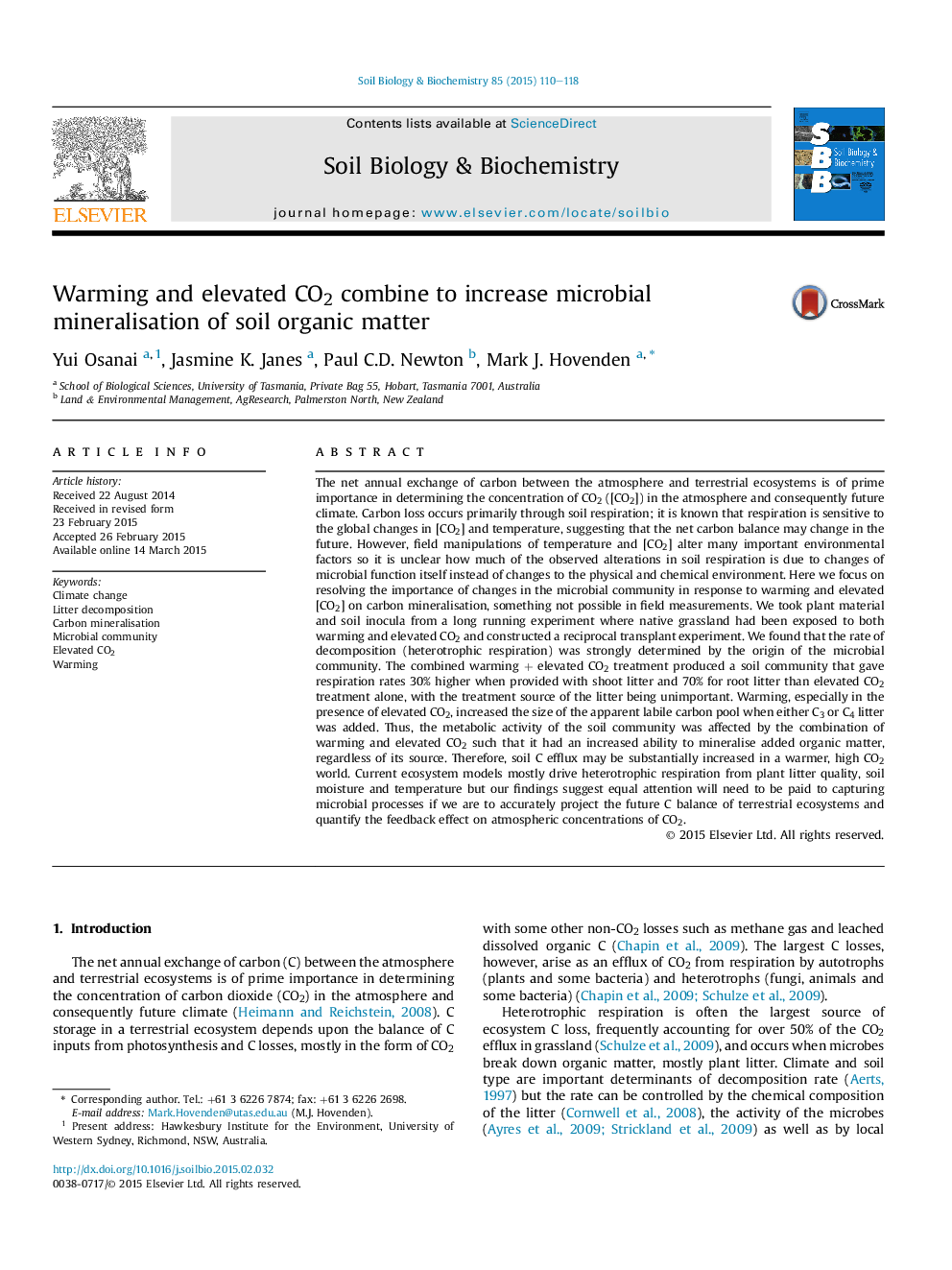| Article ID | Journal | Published Year | Pages | File Type |
|---|---|---|---|---|
| 8364184 | Soil Biology and Biochemistry | 2015 | 9 Pages |
Abstract
The net annual exchange of carbon between the atmosphere and terrestrial ecosystems is of prime importance in determining the concentration of CO2 ([CO2]) in the atmosphere and consequently future climate. Carbon loss occurs primarily through soil respiration; it is known that respiration is sensitive to the global changes in [CO2] and temperature, suggesting that the net carbon balance may change in the future. However, field manipulations of temperature and [CO2] alter many important environmental factors so it is unclear how much of the observed alterations in soil respiration is due to changes of microbial function itself instead of changes to the physical and chemical environment. Here we focus on resolving the importance of changes in the microbial community in response to warming and elevated [CO2] on carbon mineralisation, something not possible in field measurements. We took plant material and soil inocula from a long running experiment where native grassland had been exposed to both warming and elevated CO2 and constructed a reciprocal transplant experiment. We found that the rate of decomposition (heterotrophic respiration) was strongly determined by the origin of the microbial community. The combined warming + elevated CO2 treatment produced a soil community that gave respiration rates 30% higher when provided with shoot litter and 70% for root litter than elevated CO2 treatment alone, with the treatment source of the litter being unimportant. Warming, especially in the presence of elevated CO2, increased the size of the apparent labile carbon pool when either C3 or C4 litter was added. Thus, the metabolic activity of the soil community was affected by the combination of warming and elevated CO2 such that it had an increased ability to mineralise added organic matter, regardless of its source. Therefore, soil C efflux may be substantially increased in a warmer, high CO2 world. Current ecosystem models mostly drive heterotrophic respiration from plant litter quality, soil moisture and temperature but our findings suggest equal attention will need to be paid to capturing microbial processes if we are to accurately project the future C balance of terrestrial ecosystems and quantify the feedback effect on atmospheric concentrations of CO2.
Keywords
Related Topics
Life Sciences
Agricultural and Biological Sciences
Soil Science
Authors
Yui Osanai, Jasmine K. Janes, Paul C.D. Newton, Mark J. Hovenden,
